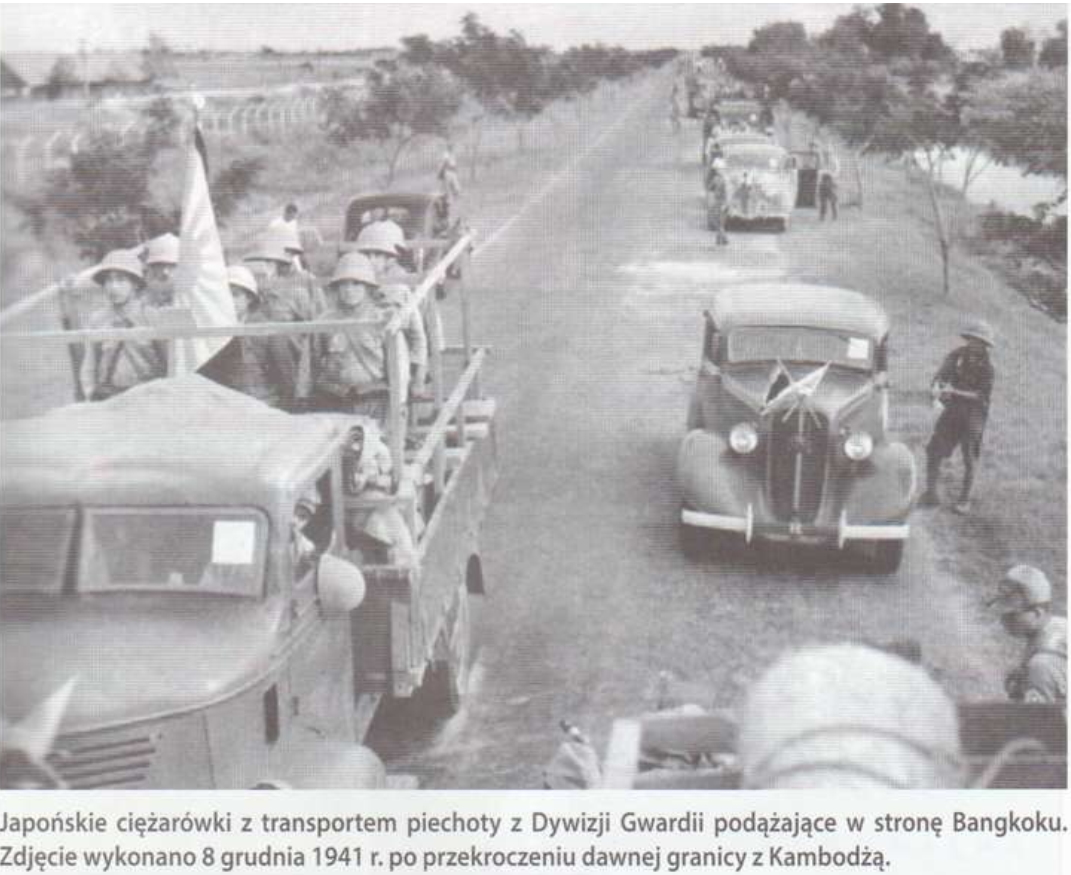
The Japanese 15th Army was formed on November 9, 1941, as a component of the Southern Expeditionary Army Group for the specific task of invading the British colony of Burma. To do this the army, then based in Indo-China, needed to transit through Thailand. On December 8, 1941, the 33rd and 55th Divisions of the army spearheaded by the Imperial Guard invaded Thailand overland from what is now Cambodia. The invasion was supported by landings on the coast to the south of Bangkok by the army’s 143rd Infantry Regiment. Fighting lasted only a few hours before the Thai government ceded access.
By the summer of 1941, Japan’s relations with the Western powers had deteriorated so much that Japanese leaders saw no point in delaying plans for military operations in Southeast Asia and the Pacific. Japan’s short-term goal was to secure the necessary supplies to complete its conquest of China by occupying the Southeast Asian territories controlled by France, Britain, the United States, and the Netherlands. Japan’s long-term plans called for further expansion south to Australia and north from Manchuria into the Soviet Union.
Japanese air and naval attacks on British and United States bases in Malaya and the Philippines were coordinated with the December 7, 1941, assault on the United States Pacific Fleet Headquarters at Pearl Harbor, Hawaii. Japan’s Southern Army, headquartered in Saigon, quickly moved from bases in southern Indochina and Hainan to attack southern Thailand and northern Malaya on December 8 and the Philippines on December 10. The Japanese easily captured British air bases in northern Malaya and soon controlled the air and sea-lanes in the South China Sea as far south as the Strait of Malacca. Naval landings were made on the Thai coast at Singora (present-day Songkhla) and Patani and on the Malayan coast at Kota Baharu. Also on December 10, the Japanese located and destroyed the Prince of Wales and the Repulse, thereby eliminating the only naval threat to their Malaya campaign. The Thai government capitulated to a Japanese ultimatum to allow passage of Japanese troops through Thailand in return for Japanese assurances of respect for Thailand’s independence. This agreement enabled the Japanese to establish land lines to supply their forces in Burma and Malaya through Thailand.
Japan seized the moment of France’s defeat in Europe in June 1940, to force local French authorities to permit Japanese troops to move into French Indochina that September. Thailand was occupied by Japan in 1941, nominally by agreement with Pibul Songgram but essentially through coercion. A collaborationist government in Thailand then sought to recover ancient provinces at the expense of the militarily vulnerable Vichy regime. With aid from the Japanese, Thai forces invaded parts of Laos and Cambodia in the summer and fall of 1941. The French fought back, even threatening to shell Bangkok from the sea. However, Japanese mediators and threats forced the Vichy governor in Saigon to surrender the disputed territories to Thailand. Songgram thus took Thailand semiwillingly into the Japanese Greater East Asia Co-Prosperity Sphere. While Songgram supported Japan, other Thais became guerrillas who presented some resistance to the Japanese. The Thai government sent an expeditionary force, the “Phayap Army,” into Burma in early 1942. It pushed Guomindang troops out of border territories long coveted by the Thais. This Burmese territory was returned by Thailand at the end of the war, along with the five Laotian and Cambodian provinces seized in 1941.
The forgotten legacy of world war Two in Northern Thailand
33 Hours of Defiance: The Thai Airmen Who Resisted an Empire